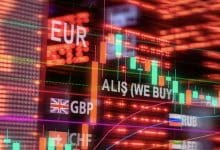Harnessing advanced techniques for gold trading in global markets

Trading gold has been a cornerstone of global financial markets for centuries, standing as a symbol of wealth, stability, and a safe haven for investors. In the contemporary landscape, the dynamic nature of markets demands a sophisticated approach to gold trading, leveraging advanced techniques to navigate the complexities and capitalize on opportunities. This guide delves into the realms of harnessing cutting-edge strategies and technologies in gold trading, providing insights that can empower traders to make informed decisions and optimize their trading endeavours.
Historical Significance of Gold Trading
Gold trading’s historical significance lies in its role as a universal store of value and a safe haven during economic uncertainties. Throughout history, gold has weathered financial crises, wars, and geopolitical tensions, retaining its allure as a tangible asset. Understanding the patterns of gold prices over time allows traders to contextualize current market dynamics and make informed predictions based on historical trends. By analyzing the factors that have historically influenced gold prices, traders can develop a nuanced perspective on the market and position themselves strategically in the face of contemporary challenges.
Current Trends in Global Gold Markets
The global gold market is constantly influenced by current events and economic indicators. Geopolitical events, such as conflicts or diplomatic tensions, can lead to sudden spikes or drops in gold prices. Additionally, macroeconomic indicators like inflation rates, interest rates, and currency values play a pivotal role in shaping gold market trends. Traders need to stay abreast of these factors to anticipate market movements and position themselves advantageously in response to the dynamic conditions of the global economy.
Technological Innovations in Gold Trading
Advancements in technology are revolutionizing the gold trading landscape. Blockchain technology, for instance, enhances transparency and security in gold transactions by creating an immutable ledger of ownership. Algorithmic trading, powered by complex mathematical models, enables traders to analyze vast datasets and execute trades at speeds impossible for humans. These innovations bring efficiency and precision to gold trading, offering traders powerful tools to navigate the market with greater accuracy.
Data Analytics for Informed Decision-Making
The era of big data has ushered in a new paradigm for gold traders. Analyzing massive datasets allows traders to discern patterns, predict price movements, and assess risks more accurately. Machine learning models, trained on historical and real-time data, provide valuable insights into market trends. By harnessing the power of data analytics, traders can make more informed decisions, increasing the likelihood of success in the volatile gold market.
Risk Management Strategies
Gold trading, like any financial endeavour, comes with inherent risks. Hedging techniques, such as futures contracts and options, offer traders a means to mitigate risk by offsetting potential losses. Diversification, spreading investments across various assets, helps protect against significant losses in any single market. Implementing effective risk management strategies is crucial for preserving capital and sustaining long-term success in gold trading.
Global Regulatory Landscape
Navigating the global regulatory environment is paramount for gold traders. Compliance with international regulations ensures the legality and legitimacy of transactions. Understanding the impact of regulatory changes on trading strategies is crucial for adapting to evolving market conditions. Traders must stay informed about compliance requirements in different jurisdictions to operate ethically and avoid legal complications in the complex world of gold trading.
Gold Trading in the Digital Age
Digital platforms have democratized access to gold markets, allowing a broader range of investors to participate. Cryptocurrencies, backed by gold or linked to gold prices, provide new avenues for trading. However, these digital advancements also come with challenges, such as cybersecurity risks and regulatory uncertainties. Traders need to navigate this digital landscape judiciously to capitalize on the benefits while managing potential pitfalls.
Environmental, Social, and Governance (ESG) Considerations
In recent years, environmental, social, and governance factors have become integral considerations for investors. Ethical concerns surrounding gold mining practices, social impact, and adherence to governance standards are increasingly influencing investment decisions. Traders need to incorporate ESG criteria into their gold trading strategies to align with evolving societal expectations and contribute to sustainable and responsible investing practices.
Case Studies in Successful Gold Trading
Examining real-world case studies provides invaluable insights into effective gold trading strategies. By analyzing both successes and failures, traders can learn from the experiences of others, gaining a practical understanding of the strategies that work in different market conditions. Case studies offer a nuanced perspective, allowing traders to adapt and refine their approaches based on the lessons learned from historical examples.
Future Outlook for Gold Trading
The future of gold trading is shaped by emerging trends and innovations. Factors such as technological advancements, changing consumer preferences, and geopolitical shifts will influence the trajectory of gold markets. Traders need to anticipate these changes and position themselves strategically to capitalize on future opportunities. A forward-looking approach, informed by a deep understanding of evolving market dynamics, is essential for long-term success in the dynamic landscape of gold trading.
Sponsored
Latest Thailand News
Follow The Thaiger on Google News:


























